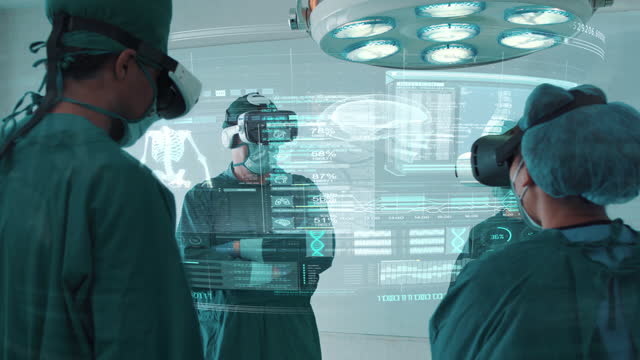Enhancing Healthcare Efficiency with Smart Hospital Technology in 2024

Enhancing Healthcare Efficiency with Smart Hospital Technology in 2024
Introduction
The concept of the “smart hospital” is revolutionizing the healthcare industry by integrating advanced technologies to improve efficiency, patient care, and management processes. As we enter 2024, healthcare executives must focus on leveraging these innovations to maximize operational effectiveness and enhance patient experiences. This blog explores key strategies for integrating smart hospital technologies and outlines their potential benefits.
The Role of Smart Hospital Technology
Smart hospital technologies encompass a broad range of digital solutions, from IoT (Internet of Things) devices and AI-powered systems to robotics and advanced data analytics. These technologies streamline operations, reduce costs, and enable healthcare providers to deliver more personalized, timely, and effective care.
Strategies for Implementing Smart Hospital Technologies:
- Adopt IoT Devices for Real-Time Monitoring:
- Implement IoT devices to monitor patient vitals, room conditions, and equipment status in real time. This allows for immediate interventions when necessary and helps ensure that resources are used efficiently.
- Utilize AI for Predictive Analytics:
- Leverage AI algorithms to analyze vast amounts of data for predictive insights, such as anticipating patient admissions, identifying potential health crises, and optimizing staffing levels based on predicted patient flow.
- Enhance Patient Interaction with AI and Robotics:
- Introduce AI-driven interfaces and robotic systems to interact with patients, handle routine inquiries, and guide them through the healthcare facility. This not only improves patient engagement but also allows staff to focus on more complex care tasks.
- Implement Automated Administrative Processes:
- Automate administrative tasks such as scheduling, billing, and patient records management using AI and machine learning. This reduces administrative burden and error rates, leading to a smoother operation.
- Integrate Smart Beds and Digital Tools in Patient Rooms:
- Equip patient rooms with smart beds that can automatically adjust settings based on the patient’s condition and digital tools for patients to communicate easily with healthcare providers and manage their entertainment and comfort.
- Deploy Advanced Security Systems:
- Use biometric security systems and advanced surveillance to enhance the security of sensitive areas. This protects both patient privacy and hospital assets.
- Optimize Resource Management:
- Apply smart inventory management systems to track and manage medical supplies dynamically. This ensures that supplies are always available when needed and reduces waste.
- Facilitate Remote Healthcare Services:
- Expand telehealth capabilities to include remote monitoring and consultation, using smart technology to provide continuous care to patients outside the hospital setting.
- Ensure Integration and Interoperability:
- Focus on the integration and interoperability of all smart technologies to ensure they work seamlessly together and with existing systems, creating a unified and efficient healthcare ecosystem.
- Evaluate and Iterate:
- Continuously evaluate the effectiveness of implemented technologies through regular feedback loops with staff and patients. Use this information to refine and expand technology deployments.
Challenges in Integrating Smart Hospital Technologies:
- High Initial Investment Costs: The cost of implementing cutting-edge technologies can be substantial, requiring significant upfront investment.
- Data Privacy and Security Concerns: As hospitals collect and store more digital data, they must also enhance their cybersecurity measures to protect patient information.
- Training and Adoption Hurdles: Ensuring that all staff are adequately trained and comfortable with new technologies can be challenging but is essential for successful implementation.
Conclusion
Smart hospital technologies offer vast potential to transform healthcare facilities into more efficient, effective, and patient-friendly environments. By strategically implementing these innovations, healthcare leaders can ensure their organizations are well-positioned to meet the challenges of modern healthcare delivery.
Call to Action
Healthcare executives should begin by assessing their current technology infrastructure and identifying key areas where smart technologies can make a significant impact. Engaging with technology experts and stakeholders to plan and implement these solutions is crucial for realizing the full benefits of a smart hospital.



